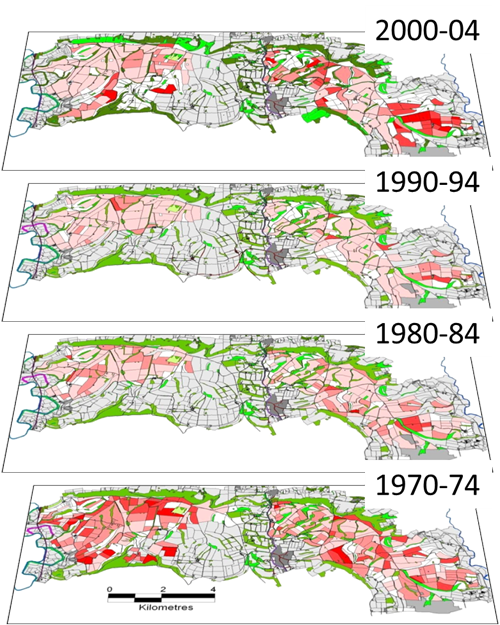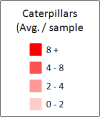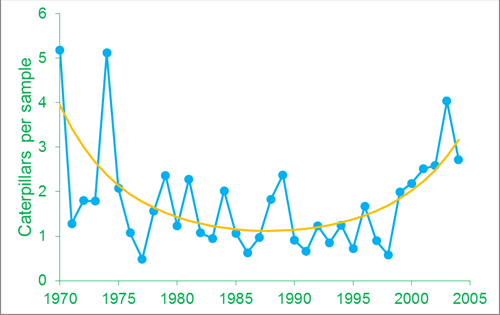In addition to the monitoring of arable flora we also record changes in the abundance of cereal invertebrates. Every year from 1970 to the present we sample the invertebrates in approximately 100 cereal fields in the third week of June using a Dietrick vacuum suction trap. Samples are then taken back into the laboratory and identified. This information allows us to determine how changes in farming (including pesticide use) affect invertebrate abundance.
Most of our research on the invertebrate component of the Sussex study database has looked at invertebrate groups that are important in the diets of farmland birds, with especial emphasis on grey partridge chick diet. This work was last updated in 2004, where the detrimental effect of pesticide use was identified (especially organophosphate insecticides). Two groups of invertebrates (spiders and harvestmen; and caterpillars of sawflies, butterflies and moths), together with the grey partridge chick food index (CFI), appear to be particularly good indicators of pesticide use. The abundance of caterpillars was quite high across the study area in the early 1970s (Figure 1). Numbers held up, particularly where traditional rotations were maintained, through the 1980s and 1990s, but declined elsewhere, with some signs of improvement in the early 2000s. The long-term abundance of caterpillars declined until the mid-1980s and then increased (Figure 2).
Figure 1: Average abundance of caterpillars (sawflies, butterflies & moths) on fields across the Sussex study, over four five-year periods


Figure 2: The average abundance of caterpillars (sawflies, butterflies & moths), declined from the early highs during the 1980s and 1990s and then increased during the early 2000s

Further reading
- Ewald, J.A., Aebischer, N.J., Brickle, N.W., Moreby, S.J., Potts, G.R. & Wakeham-Dawson, A. 2002. Spatial variation in densities of farmland birds in relation to pesticide use and avian food resources. In: Chamberlain, D.E. & Wilson, A. (eds) Avian Landscape Ecology: Pure and Applied Issues in the Large-Scale Ecology of Birds: 305-312. International Association for Landscape Ecology (UK).
- Ewald, J.A. & Aebischer, N.J. 1999. Pesticide Use, Avian Food Resources and Bird Densities in Sussex. JNCC Report No. 296, Joint Nature Conservation Committee, Peterborough.
- Ewald, J.A., Aebischer, N.J. & Potts, G.R. 1998. Increasing Pesticide Use: Impacts on Wildlife Based on 30 years of Monitoring. In: Proceedings of the Wildlife, Pesticides, and People Conference, chapter 15: 1-16. Rachel Carson Council Inc, Fairfax, Virginia, USA.
- Aebischer, N.J. & Sotherton, N.W. 1995. Long-term trends in food-resource availability in Sussex. In: Fuller, R.J. & Wilson, J.D. (eds) The Ecology of Seed-Eating Birds in Relation to Agricultural Practices: Current Research and Future Directions. BTO Research Report No. 149: 15-16. British Trust for Ornithology, Thetford.
- Aebischer, N.J. 1991. Twenty years of monitoring invertebrates and weeds in cereal fields in Sussex. In: Firbank, L.G., Carter, N., Darbyshire, J.F. & Potts, G.R. (eds) The Ecology of Temperate Cereal Fields: 305-331. Blackwell Scientific Publications, Oxford.
- Aebischer, N.J. 1990. Assessing pesticide effects on non-target invertebrates using long-term monitoring and time-series modelling. Journal of Functional Ecology, 4: 369-373.